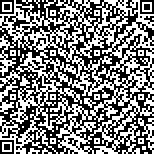本文已被:浏览 794次 下载 3008次
投稿时间:2018-12-17 修订日期:2020-03-02
投稿时间:2018-12-17 修订日期:2020-03-02
中文摘要: 利用HYSPLIT(Hybrid Single Particle Lagrangian Integrated Trajectory)模型和ERA_INTERIM数据,计算2013—2017年北京奥林匹克体育中心(以下简称奥体中心)2月期间抵达的72 h后向轨迹,并结合聚类分析方法和污染物浓度数据,分析2月不同轨迹对奥体中心污染物浓度的影响,采用四种不同的轨迹分析方法分析奥体中心污染物来源特征,并通过实例分析了不同轨迹分析方法的优缺点和适用性。结果表明:奥体中心2月主导气流明显,为西北路径,出现概率为55.85%;清洁通道为北向气流,污染来源为南向路径和偏东路径,对应颗粒物浓度最高;通过轨迹统计方法得到奥体中心2月颗粒物主要污染来源为河北地区、山东半岛、黄渤海区域、新疆北部与河西走廊。此外,研究发现潜在源贡献函数和浓度权重轨迹方法适用于近距离污染源的识别;停留时间浓度加权方法采用确定性办法通过迭代可以精准识别出北京奥体中心主要污染物来源;定量传输偏差分析方法引入不确定性概念,适用于大范围确定性污染源识别,但同时会产生虚假的污染物来源。不过,采用RTWC方法和QTBA方法相结合可消除QTBA方法带来的虚假污染源。
Abstract:Using HYSPLIT (Hybrid Single Particle Lagrangian Integrated Trajectory) model and ERA_INTERIM data, this paper calculated the 72 h backward trajectories in February during 2013-2017 starting from the Beijing National Olympic Sports Center (hereinafter referred to as Sports Center). Combined with cluster analysis and pollutant concentration data in the Sports Center, the influence of different trajectory paths on the concentration of pollutants in the Sports Center was analyzed. Four different trajectory analysis methods were used to analyze the source characteristics of the pollutants in the Sports Center, and then its advantages, disadvantages and applicability were illustrated by examples. The results showed that the dominant airflow in the Sports Center is obvious in February, following the northwestern path with a probability of 55.85%. The cleaning path is northward airflow, and the pollution sources are a southward path and an eastward path, corresponding to the highest particulate matter concentration. By trajectory statistical method, the main sources of particulate matter at the Sports Center in February are Hebei Pro-vince, Shandong Peninsula, Yellow Sea Region, northern Xinjiang and Hexi Corridor. The PSCF and CWT methods are suitable for close-range pollution source identification. In the method of RTWC, the deterministic method is used to accurately identify the main pollutant sources of the Sports Center through iteration. The QTBA method introduces the concept of uncertainty, which is suitable for the identification of a wide range of deterministic sources of pollution, but at the same time it produces some false pollutant sources. However, the combination of the RTWC method and the QTBA method can eliminate the false pollution sources brought by the QTBA method.
文章编号: 中图分类号: 文献标志码:
基金项目:国家重点研发计划(2019YFC0214602、2016YFC0203301)和国家自然科学基金项目(41875181)共同资助
| 作者 | 单位 |
| 李炟 | 国家气象中心/中国气象局数值预报中心,北京 100081 |
| 盛黎 | 国家气象中心/中国气象局数值预报中心,北京 100081 |
| 宋振鑫 | 国家气象中心/中国气象局数值预报中心,北京 100081 |
| 陈静 | 国家气象中心/中国气象局数值预报中心,北京 100081 |
| 胡江凯 | 国家气象中心/中国气象局数值预报中心,北京 100081 |
| 佟华 | 国家气象中心/中国气象局数值预报中心,北京 100081 |
引用文本:
李炟,盛黎,宋振鑫,陈静,胡江凯,佟华,2020.基于多种TSM方法的北京国家奥林匹克体育中心2月颗粒物来源解析[J].气象,46(5):687-694.
LI Da,SHENG Li,SONG Zhenxin,CHEN Jing,HU Jiangkai,TONG Hua,2020.Analysis of Beijing National Olympic Sports Center Pollutants Source in February Based on Multiple-TSMs[J].Meteor Mon,46(5):687-694.
李炟,盛黎,宋振鑫,陈静,胡江凯,佟华,2020.基于多种TSM方法的北京国家奥林匹克体育中心2月颗粒物来源解析[J].气象,46(5):687-694.
LI Da,SHENG Li,SONG Zhenxin,CHEN Jing,HU Jiangkai,TONG Hua,2020.Analysis of Beijing National Olympic Sports Center Pollutants Source in February Based on Multiple-TSMs[J].Meteor Mon,46(5):687-694.


